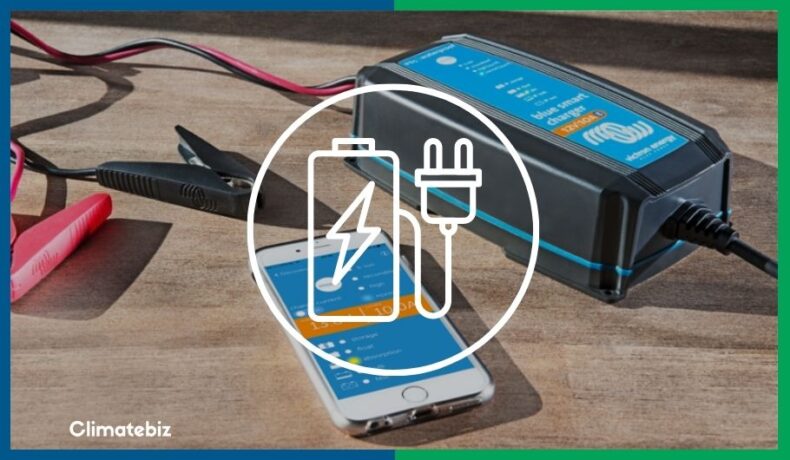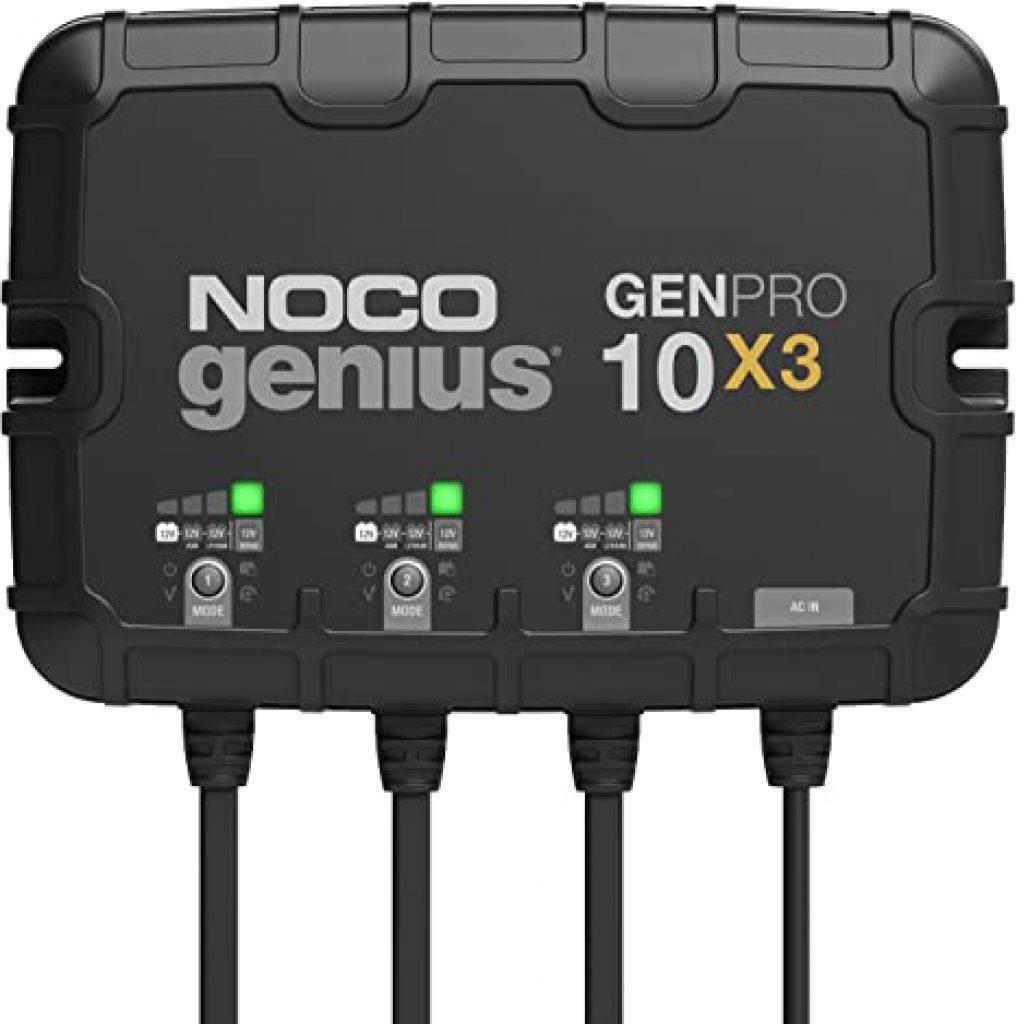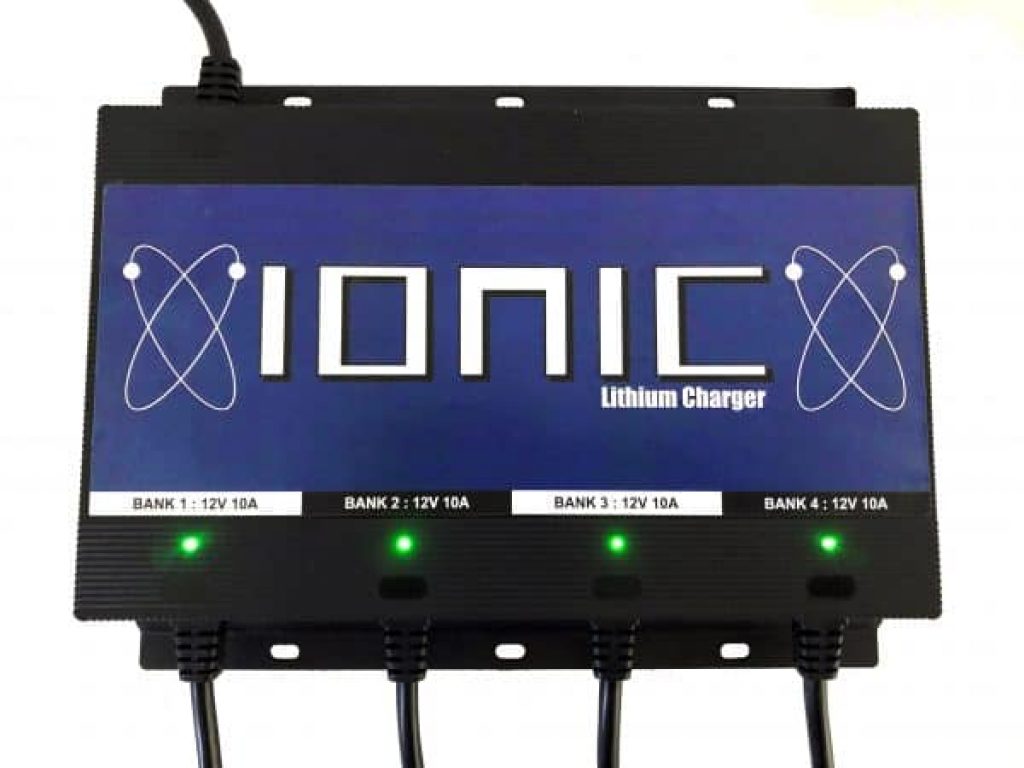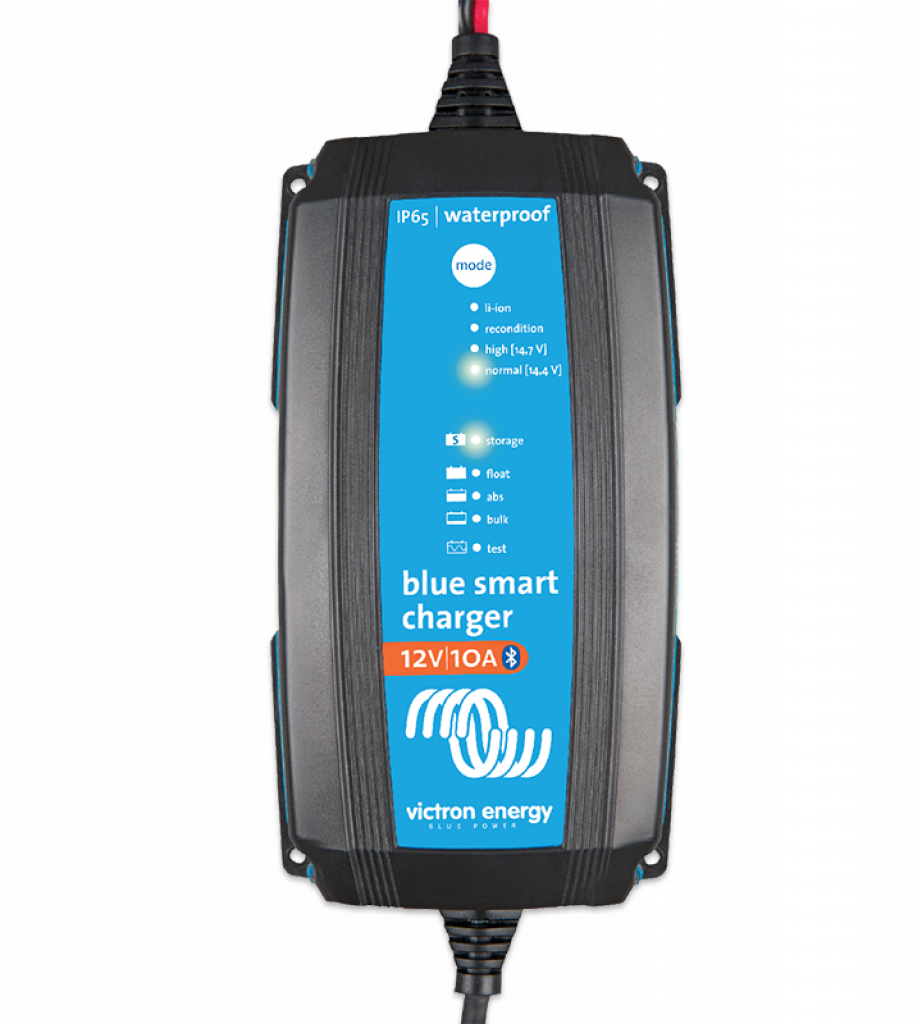If you wish to maximize your marine lithium battery’s performance and prolong its service life, you need to use reliable, high-quality marine lithium battery chargers.
Lithium Iron Phosphate (LiFePO4) is currently the best type of deep cycle battery on the market. It offers many advantages compared to Lead-acid batteries, including higher energy density, longer lifespan, and shorter charging times (up to 4 times faster!).
For this reason, many boat owners are deciding to switch their marine lead-acid batteries (Flooded, AGM, or Gel) to marine lithium batteries (LiFePO4).
However, simply switching batteries doesn’t necessarily mean that you’ll get better performance out of your battery system. Why? Because poor battery performance is often related to improper charging. Even premium lithium batteries can be easily damaged if charged incorrectly.
Therefore, it’s crucial to charge your marine LiFePO4 battery properly. And what’s the best way to charge a LiFePO4 battery? You guessed it — using an efficient lithium battery charger.
In this article, we’ll discuss marine lithium battery chargers — what they are and the correct way to use them.
Additionally, we’ll present a list of the 7 best marine lithium battery chargers.
Table of Contents
What Is A Marine Lithium Battery Charger?
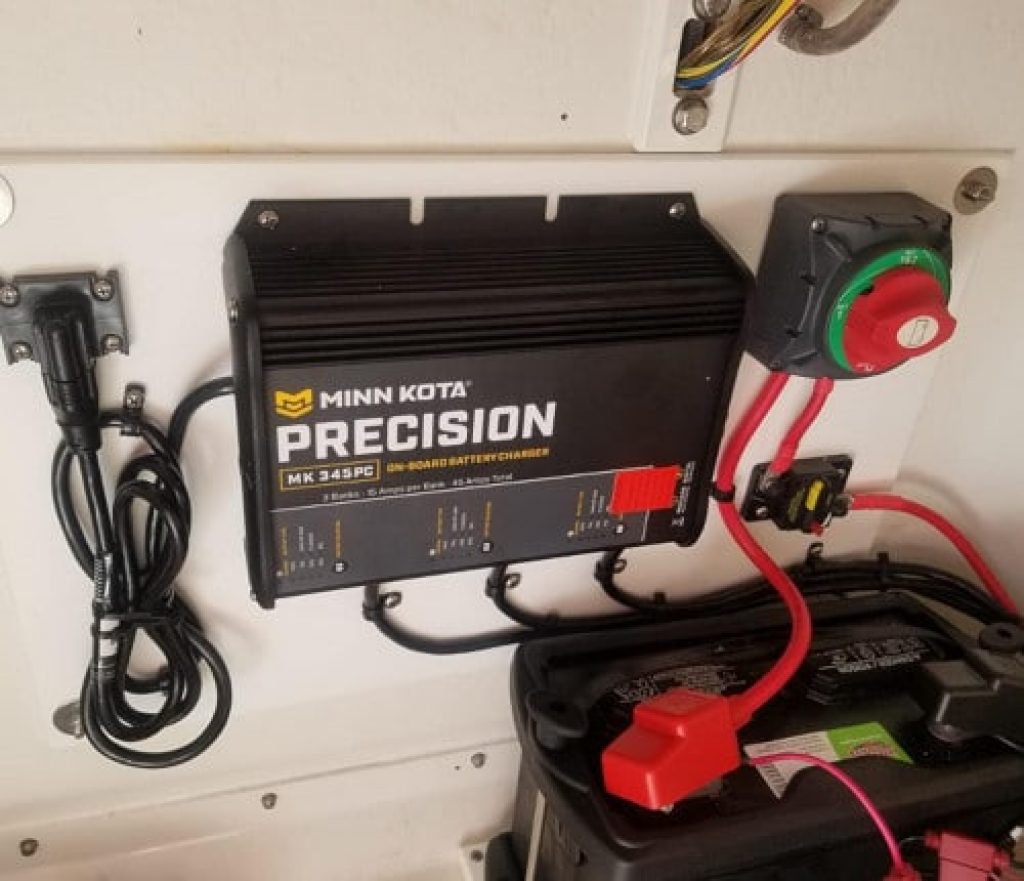
As the name implies, a marine lithium battery charger is used to charge marine lithium batteries.
Like any battery charger, a marine lithium battery charger converts AC from an external source (a wall outlet, for instance) into DC current, which is the type of current that batteries accept.
When connected to a lithium battery, the charger runs an electric current through it (from an AC external source of electricity), which initiates chemical reactions within the battery.
These chemical reactions convert electrical energy into chemical energy, which is then stored inside the battery’s cells.
Once the battery is fully charged, and the charger is removed (or stops charging automatically, if it’s a smart charger), the battery is ready to discharge.
You can repeat this process numerous times until your battery reaches the end of its life.
This way, you can power the many appliances and devices on your boat when boating, sailing, fishing, etc.
Different Battery Chemistries Require Different Charging Methods
Using LiFePO4 batteries on boats is something relatively new. The majority of boats still have lead-acid batteries as their energy storage system.
For this reason, there isn’t a charger that charges lithium batteries exclusively. Most marine battery chargers that can charge lithium batteries can also charge lead-acid deep-cycle batteries.
However, different battery chemistries require other charging methods. So the LiFePO4 battery’s charging specs, like voltage and current (and how their rates change throughout the charging process), aren’t the same as those for lead-acid batteries.
Therefore, the difference in these chargers — often called “smart chargers” — is that they are pre-programmed to deliver different charging settings according to the battery you connect them to. (The user can also program some via a smartphone app).
So if you want to charge your marine lithium batteries, you need to get a marine battery charger that can provide the correct charging method for lithium batteries.
For instance, lead-acid deep-cycle batteries require the three-stage charging method, including bulk, absorption, and float.
Conversely, LiFePO4 batteries usually require a charging method with only two stages: constant current and constant voltage.
How are Marine Lithium Battery Chargers Different From Regular Battery Chargers?
That’s a very reasonable question to ask — and the answer is simple:
Marine lithium battery chargers offer a unique charging profile optimized according to lithium batteries’ charging needs. They deliver the correct charging voltage and current, and they adjust these parameters throughout the charging process in a specific way for lithium batteries.
This way, your lithium batteries can recharge correctly, efficiently, and fast.
Additionally, marine chargers are specially designed to be mounted on boats. Most of them are waterproof and dustproof, built to endure extreme conditions that may arise during a boat ride.
Using a lithium charger maximizes your lithium battery’s lifespan and overall performance because it avoids many issues that come with incorrect charging, such as:
- Under or overvoltage
- Under or overcurrent
- Thermal runaway
So if you don’t want to risk damaging your marine lithium batteries and wasting all the money you’ve invested in them, the wisest choice is to use proper marine lithium battery chargers.
What Is The Correct Way To Charge A Marine Lithium Battery?
It’s important to note that marine lithium batteries aren’t really different from lithium batteries used for other purposes. The same goes for LiFePO4 batteries used in RVs, campervans, houses, etc.
But if we were to identify differences between normal batteries and marine batteries, they would be:
- Marine batteries must be placed in an enclosed space, so they don’t get wet
- They devices that are exclusively designed for boats
- They have marine-grade battery terminals, which are more resistant to corrosion
Marine lithium batteries are used to power devices like VHF radio, radar, chart plotter/GPS, trolling motor, mini-fridge, stereo, etc.
Therefore, charging marine lithium is the same as charging deep-cycle lithium batteries.
Ways To Charge Marine Lithium Batteries
- Using solar panels and charge controller
- Installing an onboard lithium battery charger
- Using an alternator and DC-DC charger
Although these methods vary significantly in terms of price, installation difficulty, and space requirements, they all have one thing in common: the charging settings.
In other words, they all deliver the correct voltage and current according to the lithium batteries’ charging profile.
Lithium Batteries Charging Profile
In contrast to lead-acid batteries, lithium batteries have a much higher overcharge tolerance. This means they can take a much higher charging current in a higher C-rate without suffering any damage.
Manufacturers usually recommend using a C-rate of 0.5C to charge their batteries, but most lithium batteries can be safely charged with 1C.
Therefore, good marine lithium chargers are chargers capable of delivering high currents. Anything from 10A to 20A is good enough, although higher currents are also well accepted.
Because they can take these higher amounts of current, lithium batteries recharge much faster than lead-acid batteries.
Apart from this current difference, lithium batteries also have a much lower self-discharge rate than lead-acid batteries, so they don’t require the “float stage.”
In general, lithium batteries require two charging stages:
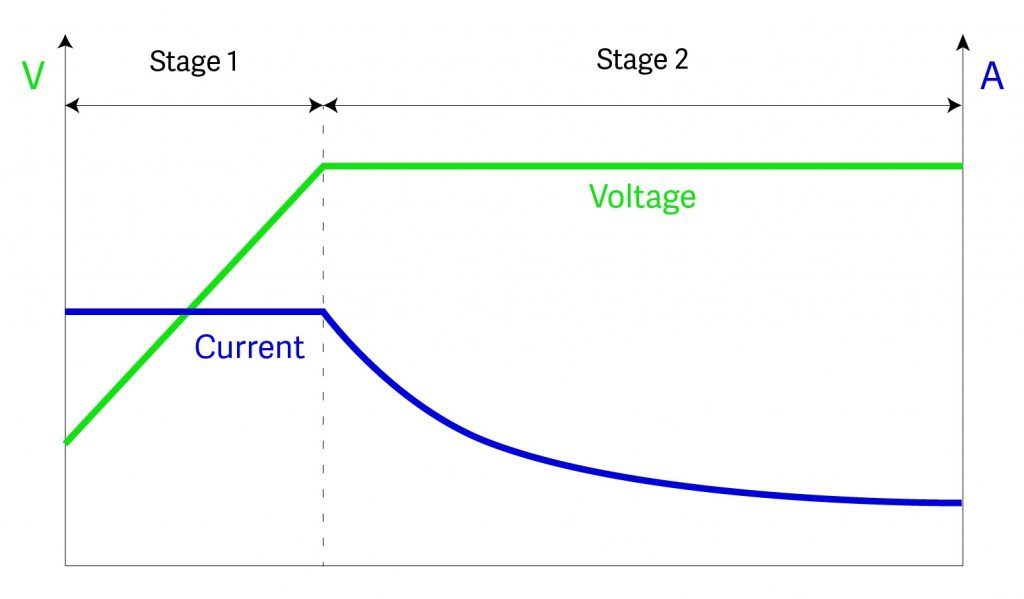
Source: Climatebiz
1. Constant Current
The charger provides a constant current while the voltage gradually increases until it reaches the second stage. For 12V batteries, the maximum recommended charging voltage is 14.6V.
2. Constant Voltage
Constant voltage is maintained while the charging current gradually decreases to around 5% of the battery’s amperage rating. At this point, the charging is cut off, and the battery is fully charged.
The correct charging voltage and current depends on the lithium battery voltage (if it’s 12V, 24V, 36V, or 48V). Because many boats have 24V or 36V trolling motors, it’s not unusual for boats to have 24V or 36V battery systems.
You should always check the manufacturer’s recommendations for charging your lithium batteries.
Below is a chart with the usually recommended charging voltages for different lithium batteries (or battery systems):
| Battery/System Voltage | Recommended Charging Voltage |
|---|---|
| 12V | 14V – 14.6V |
| 24V | 28V – 28.6V |
| 36V | 42V – 42.8V |
| 48V | 56V – 57.8V |
Smart Chargers
Most marine lithium battery chargers on the market are smart chargers. These chargers are pre-programmed to deliver different charging profiles according to the type of battery they’re connected to.
Some models detect the type of battery and start delivering the correct charging specs automatically. Conversely, other models can’t detect the kind of battery automatically, so the user must select the right charging profile in the charger’s settings.
When selecting the “lithium” charging profile, the charger will use its optimized charging technology to deliver the correct charging profile to your lithium batteries.
Lithium Battery Charging Features
There are other charging features related to lithium batteries:
- Float charge or trickle charge is not required
- Temperature compensation is not required
- Equalization not required
In Summary
The correct way to charge a marine lithium battery using a charger is to select a charger that can provide a charging profile specific to lithium batteries.
Apart from being compatible with lithium batteries, good-quality marine lithium battery chargers must also be capable of delivering high current outputs and offer multi-bank charging. They are also built to resist corrosion, especially the ones recommended for saltwater use.
Multibank chargers are designed to connect to each battery individually in a battery system and charge them all at once. They deliver just the correct voltage to each battery — an essential feature for keeping all batteries in your system balanced.
Now that you know what’s a marine lithium battery charger and the correct way to charge a marine lithium battery, you’ll learn how to select the right charger for your marine lithium batteries.
To help you in this search, we prepared a list of the 9 best lithium battery chargers.
7 Best Marine Lithium Battery Chargers
Here we present a list of the 7 best marine lithium battery chargers.
1. NOCO Genius GENPRO10X3
First up is an excellent battery charger from NOCO — a leader in the battery charger industry.
This brand offers an immense variety of chargers, meeting almost every demand.
They offer chargers for all types of batteries, for a wide range of battery voltages, and with many different current output options.
Their GENPRO series offer multi-bank chargers, perfect for marine battery setups with two, three, or even four batteries.
This charger is one of the best performing onboard marine battery chargers on the market. It can charge up to three batteries individually, ideal for 36V boat battery systems with three 12V lithium batteries in series.
It offers a maximum current output of 30A (10A per bank), so it can efficiently charge marine batteries, including LiFePO4 batteries, lead-acid deep cycle batteries, and starter batteries.
What’s more, it’s fully sealed and waterproof. It can endure several hours underwater, so you don’t have to worry about damage if water enters your boat and reaches your charger.
Finally, like most NOCO chargers, this one can be easily mounted inside your boat, anywhere, and in any direction. It has an integrated anti-vibration backing to isolate shock, vibration, and noise.
Tech Specs
| Maximum Output Current | 30A (10A per bank) |
|---|---|
| Maximum Output Wattage | 360W |
| Number of Banks | 3 banks |
| Battery Voltage Compatibility | 12V |
| Battery Type Compatibility | Li-ion (LiFePO4) and Lead-acid (Wet, AGM, Gel) |
2. Minn Kota On-Board Precision Chargers
Minn Kota is a brand that commercializes trolling motors and marine gear, such as battery chargers.
This model is from their PRECISION line, and it’s available in different options.
You can select the model according to your needs: from one to five banks, 10A or 15A in each bank.
It also allows you to select the battery type (per bank) to deliver the proper charging algorithms, including a specially formulated for the high demands of lithium batteries. It can even wake these battery types from standby.
Its microprocessor-based technology was built to deliver a faster and more precise charge every time. This charger can even wake dead 12V LiFePO4 batteries from standby automatically.
Moreover, like all of the onboard chargers from Minn Kota, this one is built to be waterproof, shock-resistant, and vibration-resistant. You can easily mount it on your boat.
Tech Specs
| Maximum Output Current | 10A or 15A per bank (both options available) |
|---|---|
| Maximum Output Wattage | 120W (for 10A) or 180W (for 15A) per bank |
| Number of Banks | Options of 1, 2, 3, 4, or 5 banks |
| Battery Voltage Compatibility | 12V |
| Battery Type Compatibility | AGM, Flooded Lead Acid, Lithium LiFePO4 |
3. Dual Pro Professional Series PS3AUTO
Dual Pro has been designing safe and reliable battery chargers for over twenty years in the marine/watercraft market segment.
Their Professional Series offers a few Lithium configurable models, which you can order with Lithium profiles.
In addition, some of their models are entirely Lithium compatible, working for a vast majority of lithium batteries right out of the box.
The PS3AUTO model (view image) comes with the “Auto Profile” intuitive charging technology, which detects if the batteries are Lithium and automatically charges them according to their charging algorithm, designed for optimal performance and life cycle.
It’s fully waterproof, ideal for fresh and saltwater marine — Bass Boats, Bay Boats, Recreational Boats, etc. It’s also an excellent choice for professional fresh water and saltwater anglers. It comes with mounting holes to install it on your boat quickly.
Tech Specs
| Maximum Output Current | 45A (15A per bank) |
|---|---|
| Maximum Output Wattage | 540W |
| Number of Banks | 3 banks |
| Battery Voltage Compatibility | 12V, 24V or 36V (each bank 12V) |
| Battery Type Compatibility | Lithium, AGM/Gel, and Flooded |
4. LithiumHub Ionic 4-Bank Charger
The Ionic 4-bank lithium charger charges up to four 12V lithium batteries with 10A simultaneously.
Additionally, you can use it for 2 or 3 bank charging systems by doubling up on different banks.
This model delivers a 14.6V charging current, ideal for charging most Lithium batteries available.
You can also charge lead-acid batteries (Flooded, AGM, and Gel. It has LED indicators for charging status.
The Ionic Lithium app shows the charge level and time to charge if you use this charger to charge Ionic Lithium batteries (same brand as the charger).
It’s lightweight, strong, and reliable. What’s more, it is probably the most affordable 4-bank option in the market.
Tech Specs
| Maximum Output Current | 40A (10A per bank) |
|---|---|
| Maximum Output Wattage | 480W |
| Number of Banks | 4 banks (can also use 2 or 3 banks) |
| Battery Voltage Compatibility | 12V each bank (so 24V, 36V, or 48V system) |
| Battery Type Compatibility | Lithium (LiFePO4) and Lead-acid (Flooded. AGM and Gel) |
5. Victron Energy Blue Smart IP67 Charger Waterproof
This smart battery charger from Victron Energy is an excellent onboard charger option for smaller battery systems since it isn’t a multi-bank charger.
Although it offers only one bank, it delivers an outstanding current of 25A, allowing you to charge your battery very fast and efficiently.
Like most Victron energy devices, this model has a built-in Bluetooth so you can check the status of the charger on a smartphone, tablet, or laptop. Additionally, you can configure all the chargers settings with the VictronConnect app.
You can use it to recover a “dead battery” by force-feeding it with a low current. Regular charging is resumed as soon as sufficient voltage exists across the battery terminals.
It’s fully waterproof, and it has mounting holes for conveniently mounting it on your boat.
Tech Specs
| Maximum Output Current | 25A |
|---|---|
| Maximum Output Wattage | 300W |
| Number of Banks | 1 bank |
| Battery Voltage Compatibility | 12V (24V 12A model also available) |
| Battery Type Compatibility | Li-ion (LiFePO4) and Lead-acid (Wet, AGM, Gel) |
6. NOCO Genius GENPRO10X4
As previously mentioned, NOCO offers a wide range of chargers, meeting every possible need.
Because larger boats have a large battery bank with at least three 12V deep-cycle or lithium batteries plus a starter battery, we decided it was worth adding this powerful battery charger to the list.
It can charge four different 12V batteries simultaneously, and it does it smartly: delivering just the correct voltage/current for each battery (up to 10A per channel).
This is a robust, powerful, fully-sealed, 100% waterproof, and dustproof onboard charger, designed to endure extreme conditions — the perfect option for your boating adventures.
Tech Specs
| Maximum Output Current | 40A (10A per bank) |
|---|---|
| Maximum Output Wattage | 480W |
| Number of Banks | 4 banks |
| Battery Voltage Compatibility | 12V (so up to 48V systems with 4x12V batteries) |
| Battery Type Compatibility | Li-ion (LiFePO4) and Lead-acid (Wet, AGM, Gel) |
7. Victron Energy Blue Smart IP65 Charger
Another charger from Victron Energy — this small portable smart charger is fully waterproof, offering a great charging solution for small boat battery systems.
It only charges one battery at a time. Still, if you decide to expand your battery system, you can get an extra charger of the same model, given its relatively low cost and lightweight/portability.
As previously mentioned, Victron Energy chargers have built-in Bluetooth, so you can easily monitor and control its setting via the VictronConnect app.
In contrast to its small size, this charger is quite powerful, offering seven-step charging algorithms to get the best out of your battery. It gives the battery the power to maintain its health and ensure optimal performance and longer life.
This model comes with crocodile clips and M8 eyelets, making it easy to connect and disconnect from your battery. If you want, you can leave it permanently attached.
Tech Specs
| Maximum Output Current | 10A |
|---|---|
| Maximum Output Wattage | 120W |
| Number of Banks | 1 bank |
| Battery Voltage Compatibility | 12V (24V 13A model also available) |
| Battery Type Compatibility | Li-ion (LiFePO4) and Lead-acid (Wet, AGM, Gel) |
Final Thoughts
The use of lithium batteries on boats is relatively new. The majority of boats still have Lead-acid batteries as their main source of power. For this reason, the marine battery charger market is only starting to grow.
Marine lithium battery chargers with a 24V output voltage aren’t yet commercially available, but they might be in the coming years, once lithium batteries really take over the marine sector.
Having a Lithium battery system on your boat highly increases your power availability. In addition, it allows for faster charging times and deeper discharges while offering outstanding performance and a long life cycle.
However, to enjoy all your lithium batteries’ advantages, you must charge them with the correct marine lithium battery charger.
Doing so will ensure your battery lasts many years, providing you with reliable power during every boat ride.

